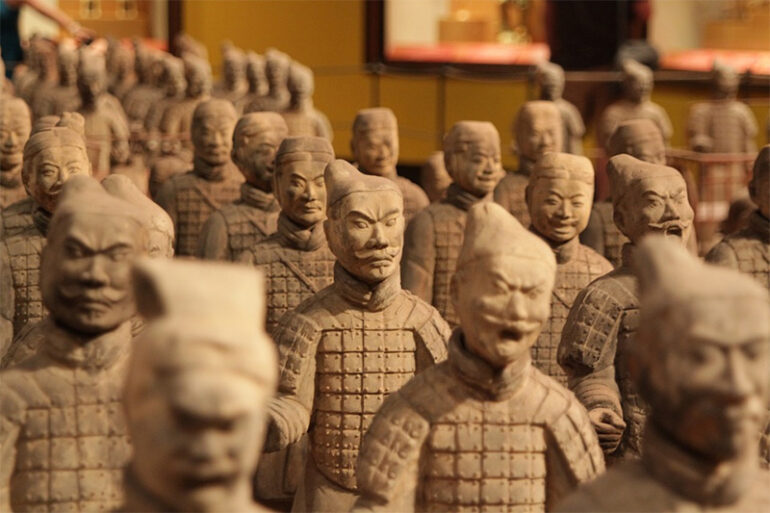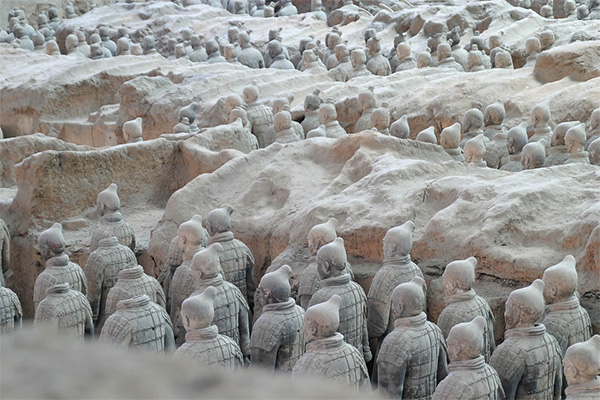China is known for its rich history, culture, and landmarks. Among these, perhaps the most recognizable archeology and valuable pieces are the terracotta army, also known as the terracotta warriors. This large collection of sculptures was created to be placed with the tomb of Qin Shi Huangdi, the first emperor of China. In the tomb of the late emperor there is a display of countless life-sized sculptures of soldiers meant to act as the emperor’s guard troops in the afterlife. These sculptures mark an important time in history as they were able to capture a moment in time by leaving archaeologists, scientists, and researchers with traces of culture, materials, and processes that were present at the time.
History
The first known record of the Terracotta warriors was discovered by a group of farmers in Shaanxi province, northwest China in March of 1974. This group was able to uncover some pieces of figure made from clay, while digging through a well. After this discovery, archaeologists began to take interest and without wasting any time, they began excavating around the site and they unearthed the first emperor’s tomb along with soldiers and horses made of terracotta that has been said to have been buried for over 2000 years, along with valuable pieces of history which were previously unknown and lost to time.
Statues
There is still much unknown about these terracotta warriors, however, researchers believe that the statues were not modeled after real soldiers. Furthermore, it is said that that these statues or some parts of them were created using molds for mass production. Scholars also believe that these sculptures were formed by joining body parts together before proceeding to be fired. Other than that, detailed accounts of the clothes and headdresses used for the soldiers show the different ranks in the army of the soldiers in the tomb. Even with detailed accounts for the clothing of these soldiers, there is much left to learn about the actual process and materials that have created the soldiers have withstood thousands and thousands of years of decay.
Weapons
The warriors that guarded the tomb of the China’s first emperor were all made from terracotta, however, the weapons that were made for these warriors were made from bronze. Records show that the tomb was fully equipped with thousands and upon thousands of real weapons such as crossbows, lances, swords, spears, and axes just the name a few. What scientists have found to be confusing was the volume of weapons that were created with so much mastery and precision. But there may be an answer to this now, as it has been deduced that these weapons may have been made in batches and made to be sent to another team to finish fully finish it, showing the efficiency of production there already was at the time.
The terracotta warriors have uncovered a great deal of history. It was able to uncover a few art techniques that were being used, especially in terms of sculpting. These pieces showed historians valuable information about the era and are still continually contributing to history as it is being slowly unveiled.
Photo Attribution:
1st and featured image by https://pixabay.com/photos/china-soldiers-terracotta-sculpture-805184/
2nd image by https://pixabay.com/photos/terracotta-warrior-china-xian-1028108/

